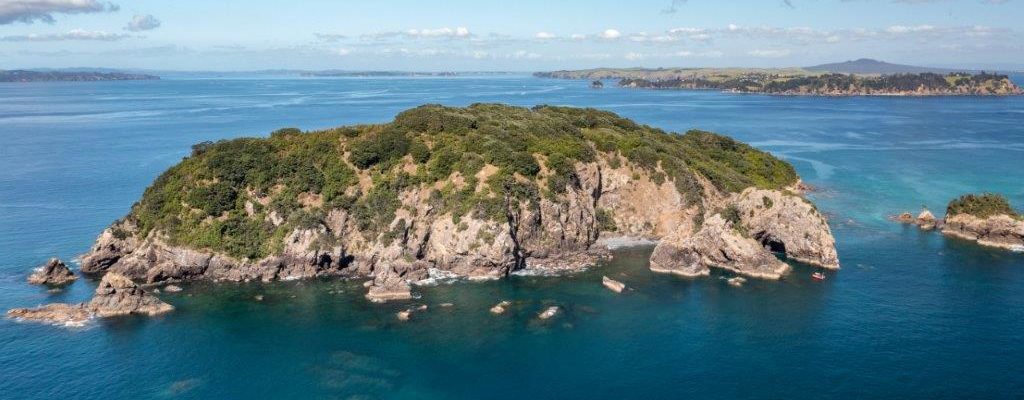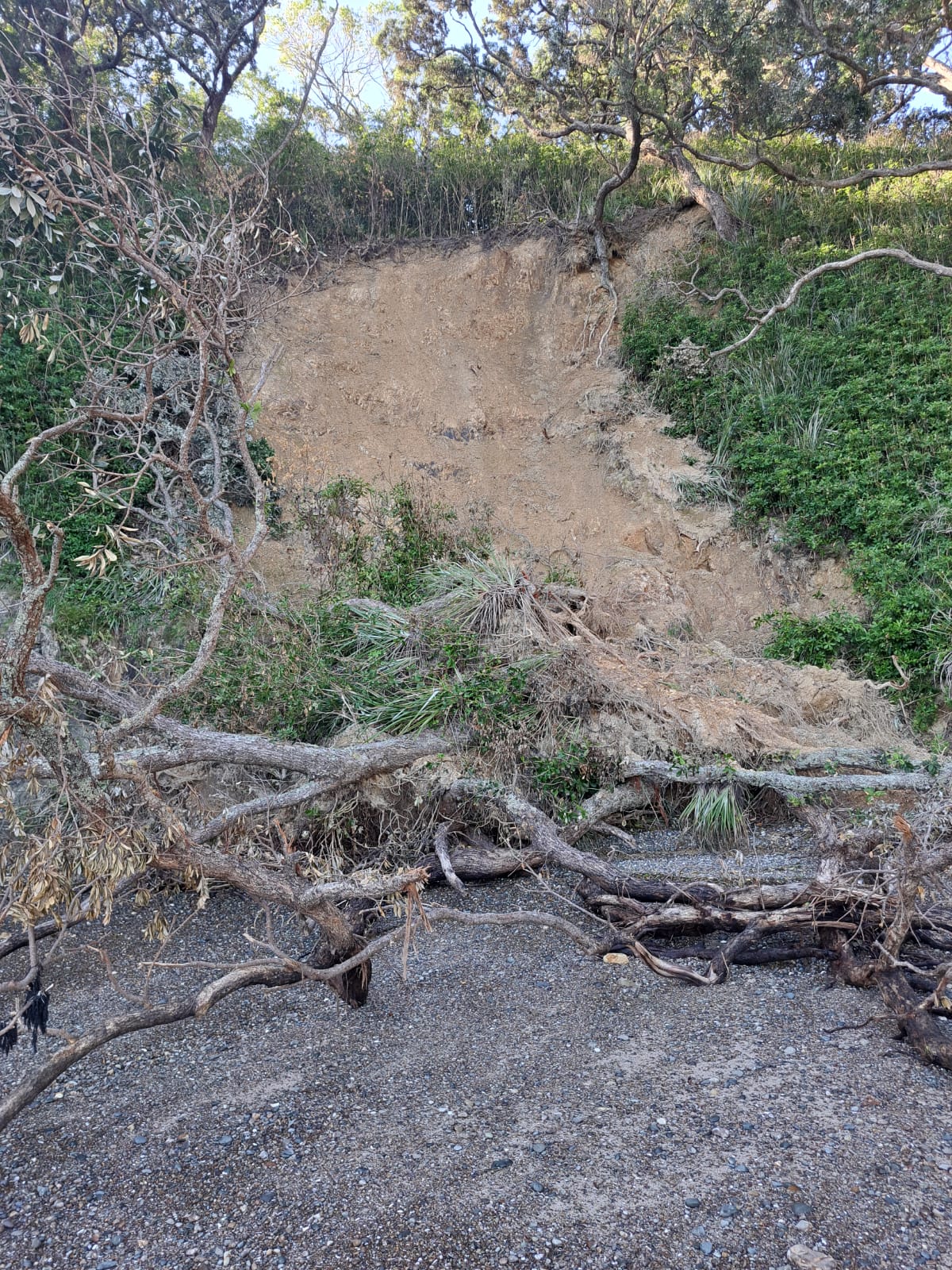The Noises hold a very special interest for seabird lovers. Being home to at least…

A catch up of news from The Noises – April 2023
Kia ora koutou!
It has been rather a long time between newsletters, so we thought we’d go into a bit more detail about goings on at ngā motu over the last wee while, because in between extreme weather events, ecological restoration projects, scientific studies and some good old-fashioned R&R, we’ve rather a lot to report.
Starting with the R&R, from Christmas to just after New Year, we enjoyed a fabulous fair weather window. During one especially sparkling post-Christmas snorkel, Sue was thrilled to swim over a reef that supported a small but impressive recovering mussel bed. Although some weeks later, to Sue’s dismay, the reef had been cleared out, further illustration of the urgent need for robust marine protection.
The Noises have featured in the news recently too, part of a riveting two-episode series on Radio New Zealand’s, Our Changing World, with Claire Concannon. The first episode is all about Auckland Museum’s monitoring project and the second instalment is about the marine environment.
Stories of Hauraki Gulf fisherpeople reeling in starving tāmure/snapper have also been making the news of late and while everyone agrees this is extremely alarming, we’re still seeing a lot of buck passing from both the commercial and recreational fishing sector. The reality is the blame lies with overfishing in the Hauraki Gulf. For the inner Gulf, sedimentation and pollution are certainly contributing factors too but the bottom line is, it’s up to all of us to do something about it.
Now to extreme weather. Zoe, Tessa and Regan were all on Ōtata for Cyclone Hale in January which further eroded the banks and middens on Main Beach and Sandy Bay. Then in February, Cyclone Gabrielle tore through much of the North Island with more damage wrought at The Noises, including multiple slips, many trees and branches down. For a long time afterwards, the sea was coffee-coloured and filled with debris and when it was possible to snorkel again, we discovered so much smothering sediment. In contrast the remaining kelp forests had done an excellent job of sweeping sediment away, with the water relatively clear under those protective fronds and sea life largely intact.
Arriving at Otata a few days after the cyclone. The pohutukawa that’s been hanging onto the cliff, increasingly vulnerable to erosion, finally fell down the bank, succumbing to the fierce wind and high onshore swells generated by the cyclone. Its roots are still interwoven with other pohutukawa roots, and it’s still alive. The image on the right is of a much larger slip on Motuhoropapa. Photos supplied by the Neureuter Family.
For more upbeat news, on March 4 Alex Rogers, CEO of the Hauraki Gulf Forum brought the first of two groups to Ōtata from the 2023 Leadership New Zealand programme, of which Alex was a participant. Together, we explored and discussed how we might raise awareness of the Hauraki Gulf through our various spheres of influence.
On the weekend of March 10 – 12, Lynette and Isabella Penrose from Ngai Tai ki Tamaki, Darcy Karaka from Sustainable Seas, and Katina Conomos from Revive Our Gulf stopped by. Over the course of the weekend, there was laughter, illuminating kōrero and some great snorkelling as we discussed how to deepen our commitment to supporting Tikapa Moana.
The Neureuter whānau came together for a working bee from March 13-18, with the focus on building, repairs, and weeding – a most successful and enjoyable few days with multiple generations pulling together.
Members of the Environmental Defence Society (EDS) were hosted on March 12, as well as Sam Thomas, Emma Hill and Mathilde Richer de Forges from DOC, part of a familiarisation trip around the Hauraki Gulf for EDS staff and the mostly Wellington-based DOC Marine Policy Team. Although it wasn’t a lengthy visit, everyone did their best to impress upon the powers that be, that the Hauraki Gulf needs urgent attention.
Researchers from The University of Auckland and Revive Our Gulf, visited on March 15 to survey kelp and sponge recovery across the site of Dr Nick Shear’s and PhD candidate Kelsey Miller’s kina project. The team was thrilled with how good it’s looking and visibility was perfect for flying a drone. This allowed them to capture compelling aerial images to illustrate the contrast between the project site and what is happening outside it. This stunning photo here was taken by Arie Spyksma.
The second Leadership NZ trip to Ōtata was on March 18 and it rained heavily right up to 5am of the morning of their visit, so the tracks weren’t walkable. However, the water conditions were perfect for snorkelling which gave manuhiri the opportunity to view various fish species close-up underwater, and as most people had never observed fish in their natural habitat, they were understandably blown away.
Maurea Consulting provide Te Kaa courses, igniting Māori cultural competency and making Māori culture and practices more accessible, and the long-awaited trip with the Maurea team finally took place on March 20, with more beautiful weather conditions. This trip was very enjoyable while also offering constructive kōrero, with everyone hoping future opportunities would blossom.

We continue to be grateful to Auckland Council for their commitment to helping with weed control and once again Free the Tree has been contracted to carry out work on Ruapuke, Maria Island. The team from Waiheke put in some solid days at the end of March and the start of April, and they returned with positive reports about how last April’s blitz had clearly made a big difference. Mile-a-Minute is much more under control, new areas of native vegetation are thriving and the seabirds are loving it!






